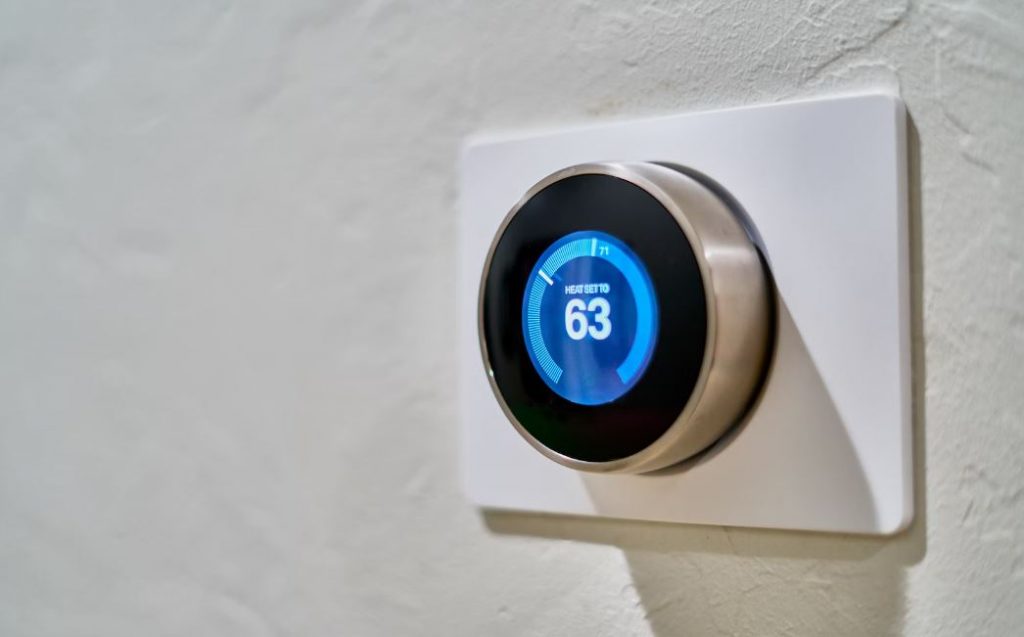Smart home systems that can be customized are becoming more popular. Cable and internet providers now offer packages to control things like lighting, temperature, and appliances in your home. These systems use adaptive solutions to analyze energy use and patterns. Then they automatically make adjustments to be more energy efficient. Providers say smart home customization offers both convenience for households and environmental benefits. This allows consumers to save money while reducing their carbon footprint.
- Interconnectivity and Automation: The Heart of Smart Homes
- Voice Control and Remote Access: Enhancing User Experience
- Smart Thermostats and Energy Monitoring Systems
- Optimizing for Accessibility Needs
- The Role of AI and Predictive Analytics
- Cable Providers Customize Smart Homes with Energy Savings Focus
- Addressing Challenges in Implementation
- Final Thoughts
- Frequently Asked Questions
Interconnectivity and Automation: The Heart of Smart Homes
Smart devices are very popular. More and more people buy smart lights, locks, appliances, and so on every year. As a result, automated and connected home systems are also growing very fast. These systems tie all the smart devices together. They let the different gadgets talk to each other.
The smart home market is on a projected growth path, expected to expand from USD 101.7 billion in 2023 to a projected USD 163.7 billion by 2028, indicating a steady CAGR of 10.0%. That’s because more devices work together now.
Automation makes homes smarter and more efficient. For instance, your lights turn off to save power when no one is in the room. And your fridge tells you when food is about to expire. Tying everything together is what makes automation so useful. It allows all smart gadgets to communicate for easier control and energy savings.
Voice Control and Remote Access: Enhancing User Experience
Connecting devices is very useful in smart homes. But connectivity also lets people control gadgets in new ways. For example, smart speakers with voice assistants are popular. You can say commands out loud to turn lights on or off. You don’t need to get up and flip a switch. Voice control makes things easy and fun. Many home devices can also now be managed remotely.
Remote access means controlling your home even when you’re not there. Apps let you adjust the thermostat from your phone. So you make sure the temperature is right for when you get home. This saves energy because the system isn’t on when not needed.
Smart Thermostats and Energy Monitoring Systems
Many gadgets help smart homes use less energy. Smart thermostats are very popular right now. They make small changes to the temperature settings each day. This saves energy while keeping your home comfy. Studies show smart thermostats cut 10% off heating and cooling bills every year. That’s because they turn down the temperature when you are out or sleeping.
Energy monitoring systems also help track usage. These systems check how much power each appliance is using. Then they show reports detailing the information. So you can see exactly where energy gets wasted. Maybe your fridge runs too often. Or perhaps lights get left on when not needed. Identifying problem areas allows people to change habits. Over time, small tweaks here and there really add up. Other energy savers include smart windows, shades, and outlets too.
Automated windows open when outdoor weather is nice to save on air conditioning. Smart shades adjust throughout the day to utilize natural light and warmth from the sun. Appliances plugged into smart outlets can automatically turn all the way off when not in use, eliminating idle power draw. As you can see, there are many ways smart home tech helps families save. The convenience and efficiency keep improving over time across devices.
Optimizing for Accessibility Needs
Smart home tech is very helpful for accessibility too. Home automation makes daily life easier for many people. For example, voice controls let you open blinds without getting up. This helps disabled or elderly users move around easier at home. Smart displays can magnify text and images to assist people with poor vision.
There are special doorbell cameras and locks designed for wheelchair users too. Reminder apps ensure medications get taken on time for those with memory challenges. Even simple things like automatic lights aid mobility around the house. The person doesn’t need to search for or operate switches manually.
All these thoughtful features make smart homes more accessible. They aim to improve convenience and quality of life through tech. Smart home products keep expanding in ways that help people. New accessibility innovations will continue emerging as the industry grows. In addition to efficiency gains, inclusiveness and independence are important too. The ultimate goal is assisting every kind of user feel comfortable through customization. With more research, smart homes will only get smarter for all.
The Role of AI and Predictive Analytics
The way forward for smart homes is AI and analysis that predicts trends. Machine learning means computer programs that get smarter with experience. These types of AI programs will study how families use energy over time. By spotting usage patterns, the programs can better predict what will be needed in the future. This way energy waste goes down while still meeting everyone’s needs.
Predictive maintenance will also be possible soon. This is when smart home systems spot problems and fix issues before anything fails or breaks. For example, the system might show that the AC unit needs regular filter cleaning for peak performance. Or it may notify that refrigerator coils should be checked to prevent future equipment failure.
Through data-driven insights and intelligent automation, smart homes will make big improvements. They will get better at self-optimization by making adjustments on their own. The homes will meet needs, enhance accessibility and save more energy thanks to advanced, thoughtful technology.
Cable Providers Customize Smart Homes with Energy Savings Focus
Hyperlocal Recommendations: Cable companies today customize smart home packages to help households save. One way is by giving hyperlocal tips as mentioned. Additionally, providers may suggest specific brands and models of gadgets suited for each region and home layout. A small, older house needs different lighting or thermostats than a large, newly-built one. Matching smart products correctly to home parameters ensures maximum comfort and savings.
Proactive Alerts: Proactive alerts from smart meters also assist users. Energy monitoring systems can detect leaks, bursts, and other anomalies early. This allows rapid response to prevent bigger issues down the line. Alerts also flag behaviors like leaving devices on standby that gradually raise bills. Once aware, families can modify habits and curb excess usage. For larger problems like leaks or malfunctions, provider reps can diagnose issues remotely to dispatch repairs. This timely support keeps homes running smoothly.
Personalized Analytics: Personalized analytics dashboards track individual appliance usage too. By seeing which devices use the most energy and when, families can adjust specific activities. For instance, limiting dryer runtimes, adjusting the AC temp a couple degrees, or dimming lights in empty rooms during peak times helps lower monthly bills. With visibility into actual consumption patterns, users make tailored cutbacks.
DIY Installation Support: Providers also share guided videos and materials covering DIY smart product installations. Handy homeowners prefer tackling projects themselves. Step-by-step instructions ensure beginners properly configure new tech like voice assistants, smart plugs or sensors. This optimizes functioning and long-term cost savings. For complex setups, professional installation may be offered.
Cost Comparison Calculators: Finally, smart home calculators give households cost estimates. By inputting their utility rates, users access tools projecting exactly how much upgrading thermostats and appliances could save them annually in energy and maintenance. Seeing personalized ROI motivates families to adopt smart tech.
The implementation and effectiveness of smart homes can vary from state to state based on factors such as climate, regional energy policies, infrastructure, and homeowner preferences. Smart homes are crucial for optimizing energy efficiency in response to these factors across different states. Especially in cities like Coral Springs, which has varying climatic conditions. Residents looking to embrace the benefits of smart home living can rely on the expertise of cable companies in Coral Springs FL.
Addressing Challenges in Implementation
Integration Complexities: While helpful, setting up smart home tech can be tricky. Adding new systems to finished houses takes planning to avoid problems. Integration complexity arises when wiring finished walls and ceilings. Providers use exploratory checkups first, like scans to map internal structures. This catches issues early before installation.
User Adoption Barriers: Users themselves may be reluctant about upgrades too. Some feel new tech is confusing, or have privacy concerns sharing appliance data. Providers respond through public education programs. They showcase how systems are actually simple for families to use day-to-day. Most smart gadgets operate themselves in the background automating convenience and savings. Users still customize preferences and automation levels to suit their needs. Also, cybersecurity measures like data encryption provide protection.
Upfront Costs: Finally, upfront upgrade expenses also deter some households. But costs usually pay for themselves over time via energy savings. Providers now offer flexible financing to alleviate budget worries. Interest-free installment plans allow users to upgrade now and pay back slowly as benefits accumulate.
Final Thoughts
There’s no doubt smart home tech is innovative and holds real promise for families looking to be more energy efficient. As devices get more interconnected and A.I. improves, home automation will become invaluable for sustainable living. Cable providers play a key role here – their expertise allows households to implement custom smart systems tuned precisely for their needs and maximal savings.
With helpful provider guidance, families gain the tools to transform their homes into conveniently self-optimizing spaces that reduce environmental impact. Efficiency aside, smart upgrades also enhance accessibility and daily life. The future looks bright for thoughtfully designed smart homes that cater to our wants and wallets! Though the technology will keep advancing, partnering early with reliable cable advisors lets households reap the fruits of connectivity today.
Frequently Asked Questions
1. How much can I actually save with a smart home system?
For most existing homes, realistic energy savings range from 15-30% on utility bills after upgrading appliances and installing a smart hub. New smart homes built with integrated tech from the ground up can achieve over 50% efficiency. But savings depend on your house layout, climate and current equipment.
2. Can I connect my old appliances if I get a smart home platform?
Yes, most smart home controllers and hubs are backwards compatible using adapters. So while you may not get full functionality compared to the newest smart appliances, you can usually automate basic controls for appliances you already own. This way you don’t have to replace everything at once.
3. Is my data safe with smart home devices monitoring my home activities?
Companies secure smart home data through rigorous encryption, multi-factor user authentication, access controls and regular security updates. This protects your usage details and habits from threats and unauthorized access as best as possible given rapid software advances. But no connected system is ever 100% hack-proof.



